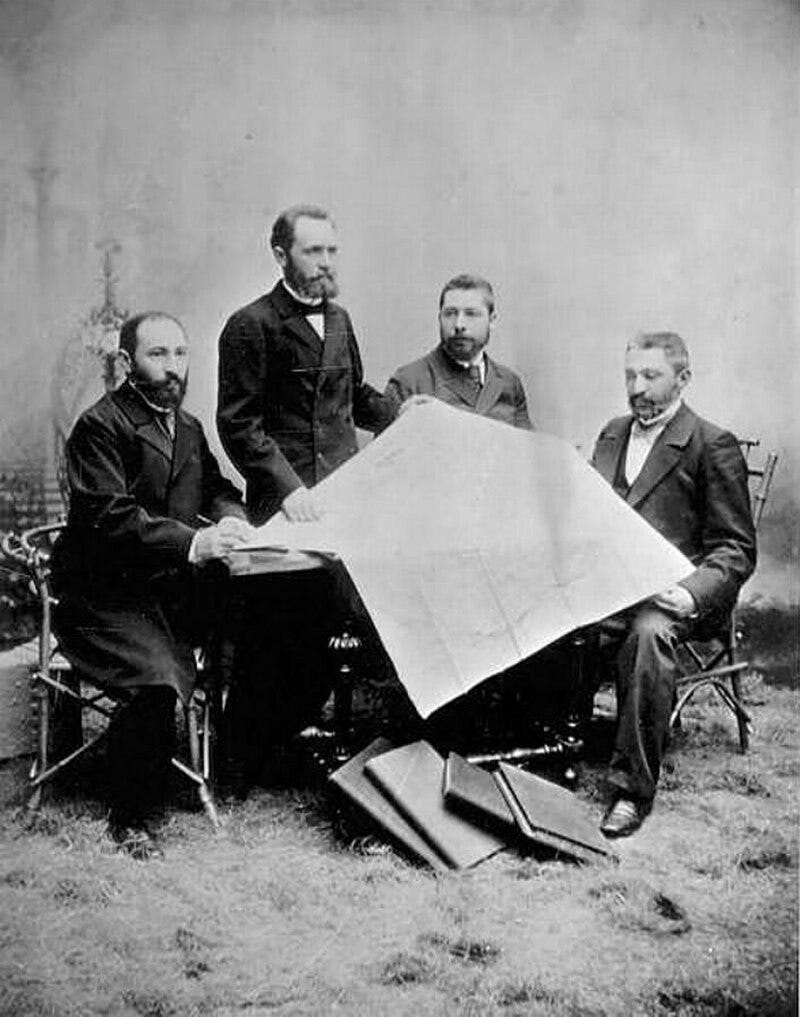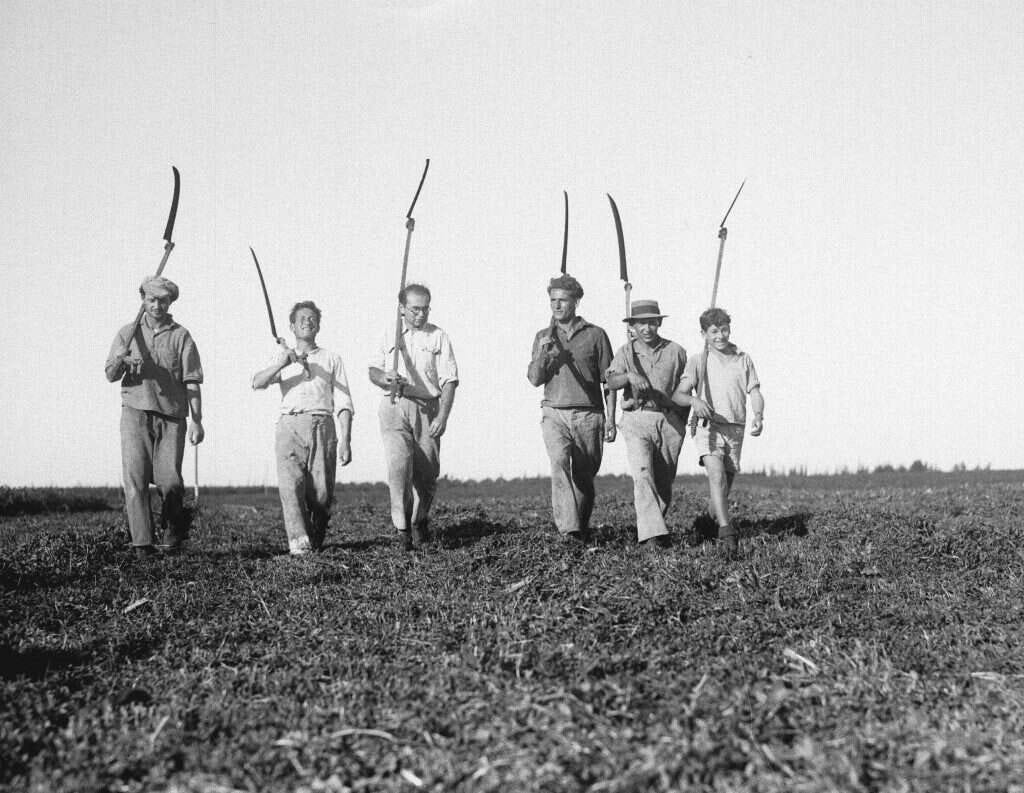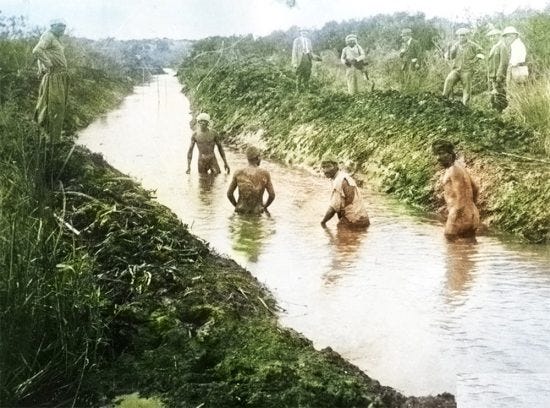Dear Reader,
Because the Jews of the world are the REAL indigenous people of Israel, not its “settler-colonists,” I added a new section to this newsletter called REAL Israel & Palestine Report, whose aim is to present a R(realistic) E(evidential) A (authentic) L(logical) analysis of the current conflict between Israel and its many regional and international foes.
Subscribers who don’t want to receive posts about this issue can unsubscribe from this new section in either of two ways:
1. Click "unsubscribe" at the bottom of any newsletter email sent to you, which will take you to a page where you can choose what sections in my newsletter to subscribe to.
2. Log into your Substack account, head to your account Settings, select your subscription and choose which newsletters to receive.
Many thanks!
The following piece, written by Yaniv Weissman, is his fourth chapter in a series exploring the birth and development of Zionism. In previous chapters, he explored Theodor Herzl's Zionist vision, examined the global Jewish diaspora, and analyzed Britain's strategic calculations.
There could be no better time to post this piece than today, given Israel’s defensive attack against Iran, a country determined to push the Jews of the Promised Land into the Mediterranean Sea or incinerate them on land with nuclear weapons, which began yesterday.
Here Weissman turns to the extraordinary story of how Zionist pioneers literally rebuilt a land that had been left to decay for centuries.
What was a sparsely populated area covered by swamps and deserts, a land inhabited mainly by Muslim Arabs with no Palestinian identity, was quickly transformed into a modern Garden of Eden.
The underlying message of this piece is that this tiny sliver of land on the East coast of the Mediterranean Sea would still be a backward wasteland save for the Zionist project.
If it's Muslim enemies, led by Iran, managed to drive the Jews into the sea, as they have promised repeatedly since 1948, this Promised Land would quickly revert to a backward wasteland.
This is why the free world, led by America, should support Israel as much as possible in its current existential battle with Iran.
The Victory of Zionism Chapter 4: A State in the Making
Transforming a Neglected Land
Yaniv Weissman
WEISSWORD
May 27, 2025
The Victory of Zionism Chapter 1: Empires in Decline, Dreams Taking Flight
When the first Zionist pioneers arrived in Ottoman Palestine in the 1880s, they encountered not the "land flowing with milk and honey" of biblical memory, but a territory that had been systematically neglected, underdeveloped, and environmentally degraded. What they accomplished over the next several decades represents one of history's most remarkable examples of land reclamation and modernization—a transformation so comprehensive that it created the physical and economic foundation for a future state.
The Land They Found
Mark Twain, visiting in 1867, described Palestine as "a desolate country whose soil is rich enough, but is given over wholly to weeds—a silent, mournful expanse." This observation captured the reality that greeted early settlers: centuries of Ottoman administrative neglect, recurring plagues, and environmental mismanagement had reduced much of Palestine to swampland, desert, and abandoned agricultural terraces.
The Huleh Valley in the north was a malarial swamp. The coastal plain was largely uninhabitable due to disease-carrying mosquitoes. Ancient irrigation systems built during Roman and Byzantine periods had collapsed, leaving once-fertile areas barren. British surveys in the early 20th century documented extensive areas of abandoned terraces and depopulated villages, evidence of a land whose productive capacity had dramatically declined from its historical peak.
Yet beneath this surface decay lay extraordinary potential. The soil, where properly drained and irrigated, proved remarkably fertile. The Mediterranean climate could support multiple growing seasons. What the land needed was systematic application of modern agricultural science, public health measures, and infrastructure development.
Draining the Swamps, Defeating Disease
The most immediate challenge facing settlers was malaria, which killed both Arab and Jewish inhabitants with devastating efficiency. Dr. Hillel Yaffe, who established medical facilities in Hadera in the early 1900s, documented mortality rates from malaria that made settlement nearly impossible in affected areas.
Jewish settlers approached this challenge with revolutionary scientific methodology. Rather than accepting disease as inevitable, they imported modern medical knowledge and drainage techniques from Europe. The drainage of the Huleh Valley swamps became emblematic of this systematic approach.
The work required substantial engineering—pumping stations, drainage canals, and careful water management that transformed malarial breeding grounds into fertile agricultural land. These health improvements benefited the entire regional population, as modern medical practices gradually spread beyond Jewish settlements.
The Science of Agriculture
Jewish settlers brought European agricultural science to a region that had relied on traditional subsistence farming techniques. The agricultural research station established in Rehovot became a center for systematic testing of crop varieties, development of drought-resistant strains, and pioneering of irrigation techniques adapted to Mediterranean climate conditions.
Aaron Aaronsohn's discovery of wild emmer wheat in the Galilee in 1906 exemplified this scientific approach. This ancient wheat variety, lost to cultivation for millennia, proved resistant to diseases that had plagued Mediterranean agriculture. Its rediscovery and cultivation helped establish new possibilities for grain production in the region.
The introduction of modern dairy farming proved equally transformative. European cattle breeds, adapted to local conditions through careful breeding programs, produced significantly higher milk yields than traditional local animals. The establishment of dairy cooperatives created improved food distribution systems that enhanced nutrition for both Jewish and Arab populations.

Infrastructure Revolution
The transformation of Palestine required modern infrastructure that the Ottoman administration had failed to provide adequately. Road construction became a priority from the earliest settlements, dramatically reducing travel time and transportation costs between communities.
Pinhas Rutenberg, a Russian-Jewish engineer, obtained the concession for electricity generation in Palestine in 1921. His hydroelectric plant at Naharayim, using the Jordan River's flow, became one of the first modern power stations in the Middle East. The development of electrical infrastructure connected Jewish settlements to power systems that were more advanced than those in many parts of the former Ottoman Empire.
The establishment of telephone and telegraph networks connected isolated settlements and enabled coordination of agricultural and commercial activities. Water management represented perhaps the most crucial infrastructure development, with engineers constructing sophisticated irrigation systems that increased agricultural productivity while conserving water in a naturally arid climate.
Land Purchase and Development
The systematic purchase of land from Arab owners represented a crucial component of Zionist development. Most early land acquisitions were voluntary transactions with willing sellers—often absentee landlords based in Beirut, Damascus, or Constantinople who had little direct connection to the land.
Contemporary British investigations, including the Hope Simpson Commission Report of 1930, documented that Jewish organizations typically paid premium prices for land, often purchasing marginal or abandoned areas that local farmers considered less valuable. These purchases frequently provided Arab sellers with unprecedented capital.

The development of purchased land followed scientific principles. Rather than simply clearing and planting, Jewish agriculturalists conducted soil analyses, planned crop rotations, and designed irrigation systems before cultivation began. This methodical approach often produced yields that exceeded traditional farming results.
Economic Transformation
The cumulative effect of these improvements created substantial economic growth that benefited the entire population. The British Mandate government's statistical abstracts document significant increases in agricultural production, urban development, and commercial activity during the mandate period.
Arab economic indicators improved notably during this period. Arab participation in citrus cultivation expanded substantially, often adopting Jewish agricultural techniques. Arab-owned industrial enterprises increased significantly. Arab urban population grew considerably, indicating substantial economic opportunity.
The establishment of modern banking, insurance, and commercial institutions created a sophisticated economy. International trade flourished as infrastructure improvements reduced transportation costs. Jaffa oranges became a premium export product in European markets, with Jewish-developed varieties and packing techniques setting new standards.
Creating Urban Modernity
The founding of Tel Aviv in 1909 symbolized the broader transformation occurring throughout Palestine. Starting as a neighborhood outside ancient Jaffa, Tel Aviv grew rapidly into a modern city. Its development demonstrated how Zionist settlement combined idealistic vision with practical urban planning.
Tel Aviv was planned as a garden city with wide boulevards, public parks, and modern sanitation systems. Its architecture reflected international modernist styles while adapting to Mediterranean climate conditions. The city's growth created economic opportunities that attracted both Jewish immigrants and Arab residents from surrounding areas.
The establishment of the Hebrew University in Jerusalem in 1925 created the region's first modern research institution. Its faculties contributed directly to ongoing development efforts while training a new generation of professionals. Cultural institutions flourished alongside economic development, creating sophisticated cultural life.
The Ripple Effects
What made this transformation particularly significant was how improvements initiated by Jewish settlers spread throughout the region. Arab farmers adopted new agricultural techniques, Arab merchants invested in modern commercial enterprises, and Arab professionals trained in Jewish-established institutions.
Medical advances pioneered in Jewish hospitals spread throughout Palestine. The Hadassah Medical Organization provided healthcare regardless of ethnicity or religion, with mobile clinics reaching remote areas and contributing to improved public health across the population.
Educational innovations had similar ripple effects. While maintaining separate school systems, Jewish educational institutions pioneered teaching methods and curricula that influenced regional educational development.
The Foundation of Statehood
By the 1940s, this comprehensive transformation had created economic and institutional foundations capable of supporting independent governance. Palestine possessed modern infrastructure, sophisticated institutions, and a diversified economy.
The Jewish population had grown from approximately 50,000 in 1900 to over 600,000 by 1947—growth facilitated by immigration and natural increase supported by improved living conditions. This population had created economic and social institutions capable of modern administration.
Arab population had also grown substantially during the same period, reflecting improved economic opportunities and public health rather than immigration, demonstrating how modernization benefited all inhabitants of the region.
The physical transformation was comprehensive. A territory that had been characterized by swamps, abandoned villages, and subsistence agriculture had developed into a modern economy with advanced infrastructure, scientific agriculture, and growing industries.
Thank you for reading! like and share with friends.
Primary Historical Sources
Twain, Mark. The Innocents Abroad (1869) - Direct quote about Palestine's condition
Hope Simpson Commission Report (1930) - British investigation of land transactions and development
British Mandate Government Statistical Abstracts (1929-1944) - Economic and demographic data
Government of Palestine Census Reports (1922, 1931) - Population and development statistics
Medical and Scientific Documentation
Kligler, Israel Jacob. The Epidemiology and Control of Malaria in Palestine (1930) - Malaria reduction efforts
Aaronsohn, Aaron. Reports on agricultural discoveries and development - Carnegie Institution publications
Land and Development Records
Jewish National Fund Annual Reports - Afforestation and land development projects
Central Zionist Archives - Land purchase documentation
Hadassah Medical Organization Records - Healthcare provision documentation
Academic Research
Sufian, Sandra. Healing the Land and the Nation: Malaria and the Zionist Project in Palestine, 1920-1947 (2007)
Karlinsky, Nahum. California Dreaming: Ideology, Society, and Technology in the Citrus Industry of Palestine (2005)
Shafir, Gershon. Land, Labor and the Origins of the Israeli-Palestinian Conflict (1989)
Note on Data Verification
Specific statistics cited are drawn from the British Mandate government reports and contemporary surveys. Readers seeking detailed numerical data should consult the original British Mandate Statistical Abstracts and Census Reports, available through the UN Information System on the Question of Palestine (UNISPAL) and major research libraries.
Recommend WeissWord to your readers
Analyst & Writer specializing in the intersection of global forces. Analyzing energy markets, geopolitics, and emerging technologies. Providing unique insights in English & Hebrew.
© 2025 WeissWord Team











Zionism is white supremacy.